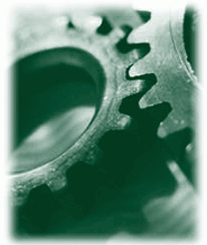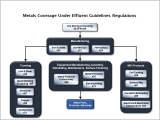Metal Products and Machinery Effluent Guidelines
 EPA promulgated the Metal Products and Machinery (MP&M) Effluent Guidelines and Standards in 2003. The regulation (40 CFR Part 438) applies to about 2,400 facilities that manufacture, rebuild, or maintain finished metal products, parts, or machines, and generate oily wastewater. The MP&M regulation covers only direct dischargers
EPA promulgated the Metal Products and Machinery (MP&M) Effluent Guidelines and Standards in 2003. The regulation (40 CFR Part 438) applies to about 2,400 facilities that manufacture, rebuild, or maintain finished metal products, parts, or machines, and generate oily wastewater. The MP&M regulation covers only direct dischargers![]() direct dischargerA point source that discharges a pollutant(s) to waters of the United States, such as streams, lakes, or oceans. These sources are subject to the National Pollutant Discharge Elimination System program regulations. Municipal and industrial facilities that introduce pollution through a defined conveyance or system such as outlet pipes are direct dischargers. and the requirements are incorporated into NPDES permits.
direct dischargerA point source that discharges a pollutant(s) to waters of the United States, such as streams, lakes, or oceans. These sources are subject to the National Pollutant Discharge Elimination System program regulations. Municipal and industrial facilities that introduce pollution through a defined conveyance or system such as outlet pipes are direct dischargers. and the requirements are incorporated into NPDES permits.
Facilities Covered
In addition to some government facilities, the regulation sets performance standards for facilities in these industrial sectors:
- Aerospace
- Aircraft
- Bus and Truck
- Electronic Equipment
- Hardware
- Household Equipment
- Instruments
- Mobile Industrial Equipment
- Motor Vehicle
- Office Machine
- Ordnance
- Precious Metals and Jewelry
- Railroad
- Ships and Boats
- Stationary Industrial Equipment
- Miscellaneous Metal Products
Examples of federal, state, and local government facilities that fall under this rule are a town that operates its own bus, truck, and/or snow removal equipment maintenance facility or a U.S. military base.
Related Categories
- Metal Finishing (40 CFR Part 433)
Direct or indirect dischargers which perform any of the following: electroplating (except indirect discharging "job shops"), electroless plating, anodizing, coating, chemical etching and milling, printed circuit board manufacture (captive facilities only) - Electroplating (40 CFR Part 413)
"Job shop" electroplaters and independent printed circuit board manufacturers which are indirect dischargers
Effluent Limitations and Technologies
- In-process flow control and pollution prevention
- Oil-water separation by chemical emulsion breaking and skimming
Regulatory History
- Final Rule (May 13, 2003)
- Documents, including:
- Development Document
Describes industry processes, pollutants generated, available control and treatment technologies, the technical basis for the final rule, and costs of the rule - Economic, Environmental and Benefits Analysis
- Development Document
- Proposed Rule (January 3, 2001)
- Re-proposal; replaces 1995 proposed rule
- Proposed Rule (May 30, 1995)
Additional Information
For additional information regarding MP&M effluent guidelines, please contact Ahmar Siddiqui (siddiqui.ahmar@epa.gov) or 202-566-1044.

